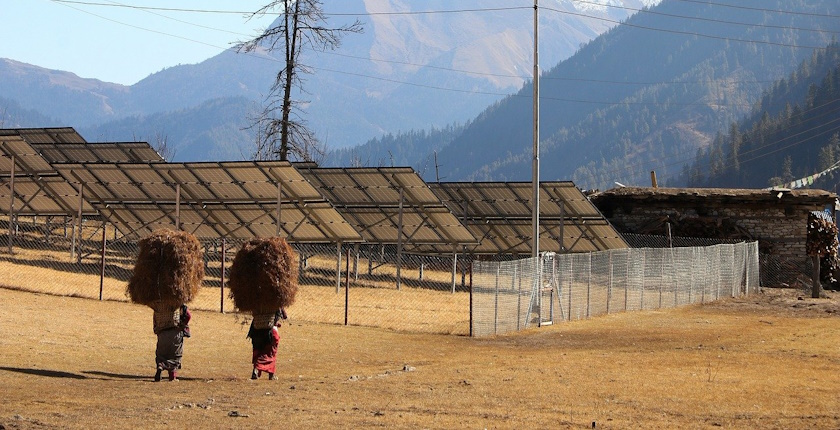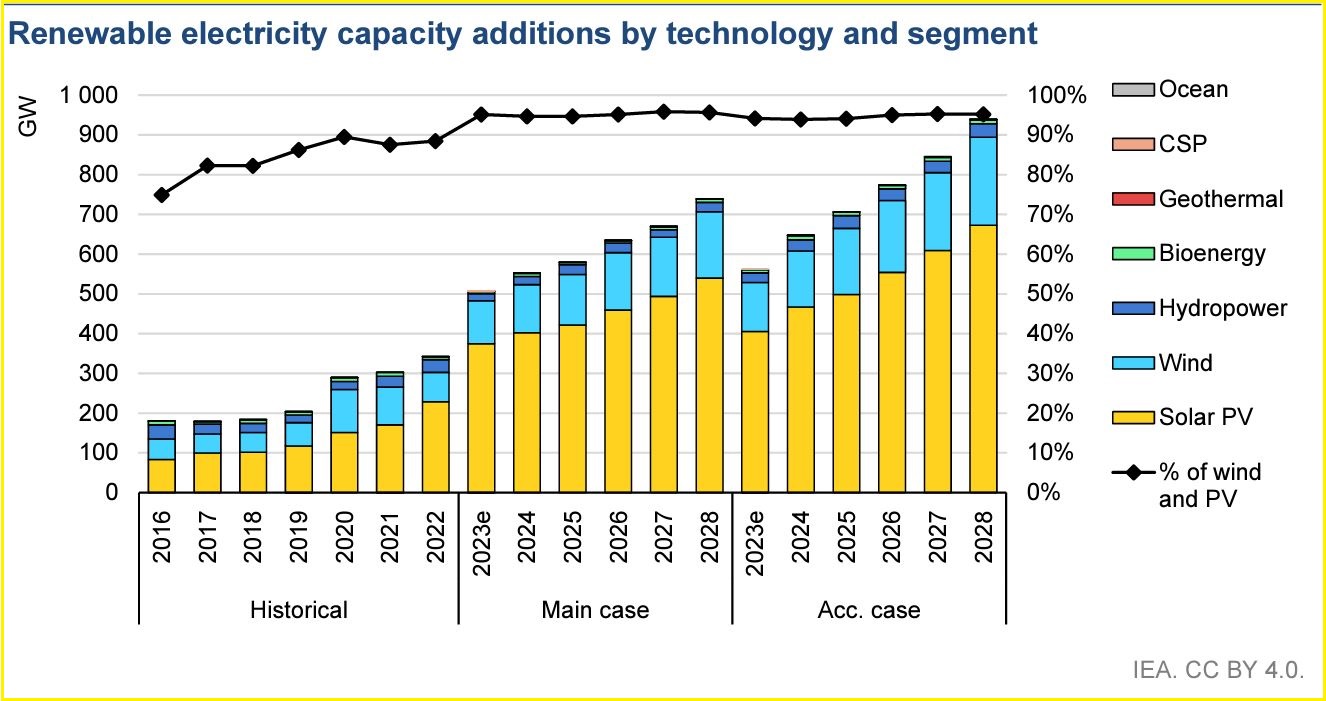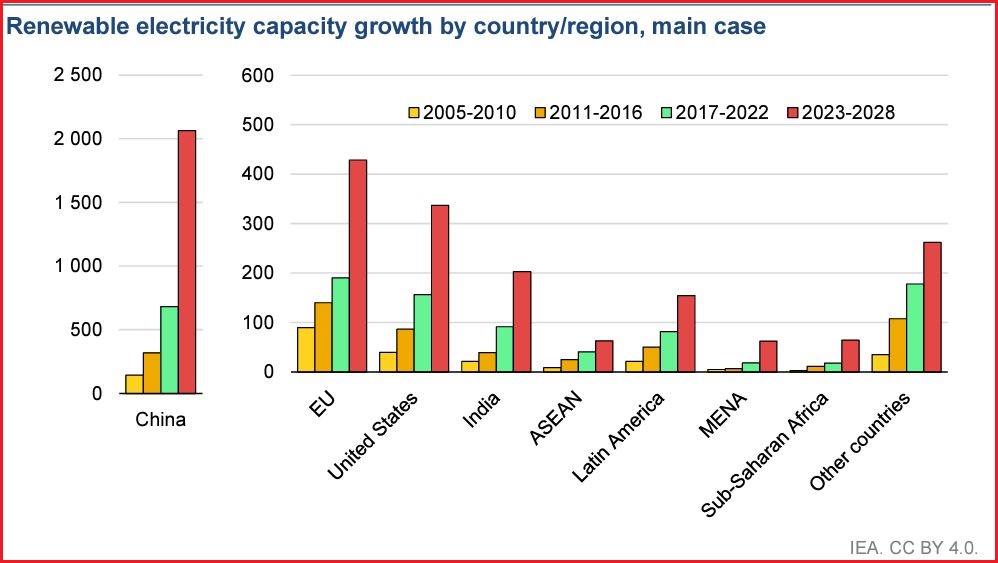
Photo: Soraj Shahi from Pixabay
Global renewable electricity capacity additions increased by almost 50% to nearly 510 gigawatts (GW) in 2023, with solar and China as the most dominant factors by far. It is the fastest growth rate in the past two decades, however governments have to step up efforts to achieve the goal of tripling global capacity by 2030, set last month at the COP28 climate change conference, according to Renewables 2023, the International Energy Agency’s annual report.
Solar power alone accounted for three quarters of renewable electricity capacity additions worldwide, while China commissioned as much photovoltaics as the entire world did in 2022, the report reads. The country’s wind additions grew by 66% year on year.
IEA said 2023 was the 22nd record year in a row for the overall additions. While the increases in capacity in Europe, the United States and Brazil also hit all-time highs, China’s acceleration was extraordinary, the agency added.
Renewables are set to overtake coal by 2025 to become the largest source of global electricity generation
Under existing policies and market conditions, it forecasts that global renewable electricity capacity will reach 7,300 GW by 2028. Solar and wind power would account for 95% of the expansion, with renewables overtaking coal to become the largest source of global electricity generation by early 2025, the report reads.
The growth trajectory would see the global capacity increase to 2.5 times its current level by 2030, but it means it would fall short of the goal set at CO28, to triple the operational volume, IEA said.

It advised governments to close the gap toward the targeted 11,000 GW by 2030 by overcoming current challenges (policy uncertainties; insufficient grid investments; administrative barriers and permitting procedures; insufficient financing) and implementing existing policies more quickly.
IEA Executive Director Fatih Birol said governments have the tools needed to close the gap. Onshore wind and PV are cheaper today than new fossil fuel plants almost everywhere and cheaper than existing fossil fuel plants in most countries, he stressed.
“For me, the most important challenge for the international community is rapidly scaling up financing and deployment of renewables in most emerging and developing economies, many of which are being left behind in the new energy economy. Success in meeting the tripling goal will hinge on this,” Birol stated.
Prices of PV modules declined by almost 50% in 2023

According to the report, prices of solar power modules declined by almost 50% year-on-year, with cost reductions and fast deployment set to continue. The reason, IEA added, is the increase of global manufacturing capacity, forecasted to reach 1,100 GW by the end of 2024, significantly exceeding demand.
By contrast, outside of China the wind industry is facing a more challenging environment due to a combination of ongoing supply chain disruption, higher costs and long permitting timelines, which require stronger policy attention.
Four renewable energy milestones are expected to be achieved by 2028
The IEA said that the world is on course to add more renewable electricity capacity in the next five years than since the first commercial renewable power plant was built more than 100 years ago.
Solar and wind power are set to account for 95% of global renewables expansion, the organization added and expressed expectations that several renewable energy milestones would be achieved within five years:
In 2024, wind and solar together generate more electricity than hydropower.
In 2025, renewables surpass coal to become the largest source of electricity generation.
Wind and PV each surpass nuclear electricity generation in 2025 and 2026, respectively.
In 2028, renewable energy sources account for over 42% of global electricity generation, with the combined share of wind and solar power doubling to 25%.
Solar and onshore wind deployment through 2028 is expected to more than double in the United States, European Union, India and Brazil against the last five years, IEA said in its Renewables 2023 report.


















Be the first one to comment on this article.